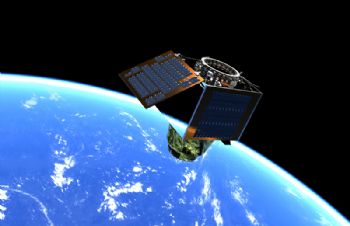
Guildford-based Surrey Satellite Technology Ltd (SSTL) and Leonardo, (the Italian multinational aerospace company), have been awarded funding from the UK’s Centre for Earth Observation Instrumentation (CEOI) to develop a new detector assembly for a low-cost world-leading mid-wave infra-red (MWIR) imager.
This will be designed to achieve 3.5m GSD (ground sample distance), fit into a small low-cost platform with a launch mass of about 130kg, and address the future demands of the evolving Earth Observation constellations market.
The detector assembly will use Leonardo’s MWIR detector (
www.leonardocompany.com), which is a high-performance integrated detector cooler assembly with an array of pixels on an 8um pitch — the smallest thermal mid-wave infra-red pixels commercially available in the world.
The detector will be re-configured with ‘a longer-life lower-vibration COTS split linear Stirling engine cooler and new electronics’.
It will and provide the interface between the detector and the imager. Successful completion of the detector assembly will allow it to be flown on an SSTL demonstration mission scheduled for launch in 2021.
Andrew Cawthorne, SSTL director of business development and sales (
www.sstl.co.uk), said: “This new technology is a game-changer for Earth Observation applications.
"Whereas previously the market has been focussed on a fairly small range of wavebands, there is now increasing demand for mixed sensors and complementary data sets.
"Building on our successful Carbonite range of spacecraft, this new technology will enable us to do the same for thermal imagery as we have done for visible imagery, while driving down costs.”